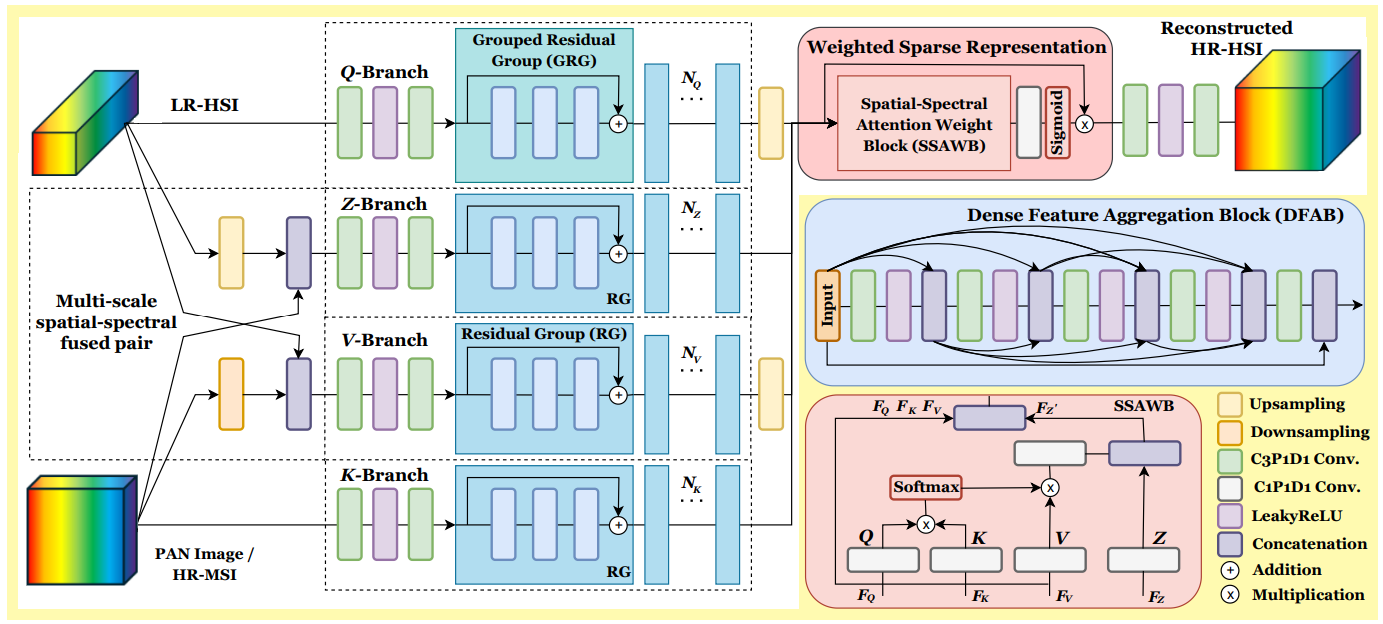Robust Hyperspectral Image Panshapring via Sparse Spatial-Spectral Representation
This task aims to generate reconstructed high-resolution hyperspectral images (HR-HSI) by fusing low-resolution hyperspectral data with high-resolution multispectral images, enhancing both spatial and spectral details for better remote sensing analysis.
Enhancing Hyperspectral Imaging with S3RNet
High-resolution hyperspectral images are vital for accurate analysis in remote sensing, environmental monitoring, and precision agriculture. However, due to hardware limitations, capturing such detailed data is challenging.
S3RNet offers a powerful solution by intelligently fusing:
- Low-resolution hyperspectral images (LRHSI) – rich in spectral detail
- High-resolution multispectral images (HRMSI) – rich in spatial detail
Through a deep learning framework, S3RNet enhances both spatial and spectral quality to generate high-resolution hyperspectral images.
Key Features of S3RNet:
- Multi-Branch Fusion Network (MBFN): Extracts complementary features from different spatial and spectral scales
- Spatial-Spectral Attention (SSAWB): Focuses on informative features while reducing noise
- Dense Feature Aggregation (DFAB): Efficiently combines features for better reconstruction
S3RNet Architecture

The figure above illustrates the S3RNet framework, Multi-Branch Fusion Network (MBFN) for extracting multi-scale spatial-spectral features in Q-K-V-Z branch, Spatial-Spectral Attention Weight Block (SSAWB) for adaptive feature refinement and improving robustness against noise interference with sparse feature representation, and Dense Feature Aggregation Block (DFAB) for efficient feature integration.
Performance Evaluation and Complexity Comparison

S3RNet delivers state-of-the-art performance, especially under noisy conditions, making it a reliable tool for high-quality hyperspectral image reconstruction.